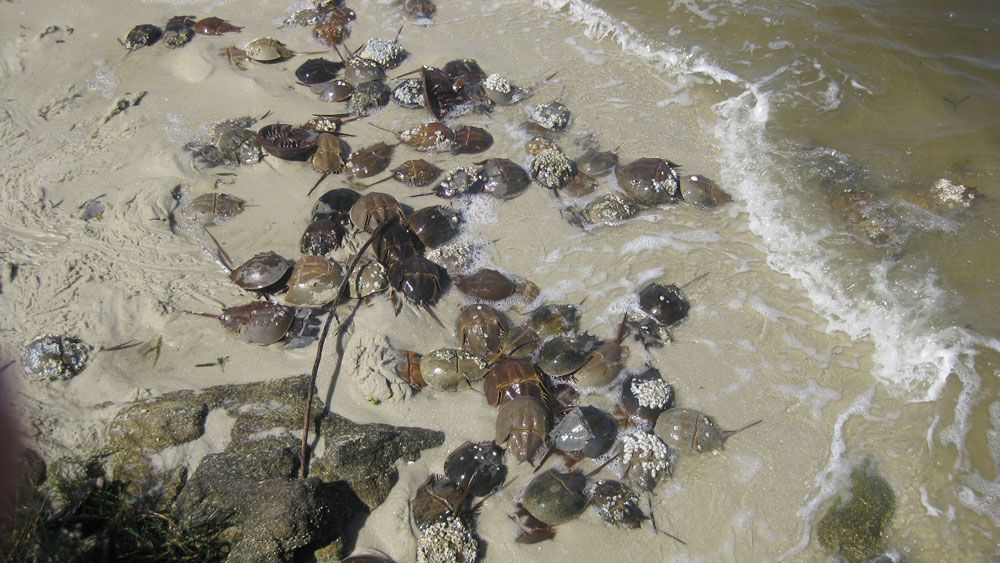ORLANDO, Fla. — Florida Fish and Wildlife Conservation Commission is looking for a few good citizen scientists to help them track horseshoe crabs in the state.
- Little is known about Florida's horseshoe crab population
- FWC wants residents to report any sightings
- Best chance is around high tide, within 3 days of a new or full moon
- RELATED: FWC Facts about Horseshoe Crabs
Horseshoe crabs mate year-round, but March and April is the peak time for the animals, and it's not uncommon to see clusters of them along the shore.
Horseshoe crabs are important in coastal areas, because their eggs are food for shorebirds and fish, while sea turtles and alligators can eat the adult horseshoes.
The horseshoe crab is an ancient species -- it's been around for 450 million years. It's not even a crab -- it's closer to an arachnid.
But little is known about the population in Florida. FWC utilizes citizen scientists around the state to report sightings and help gather data about the crabs.
Public sightings help the state identify spawning beaches for the Florida Horseshoe Crab watch program, which tags the crabs to track their movements.
The Horseshoe Crab Watch began in 2015 in Florida's Big Bend, and this year it's being expanded into Brevard County and Indian River County, along the Indian River Lagoon.
FWC says beachgoers will have their best luck seeing horseshoe crabs around high tide, within three days of a new or full moon.
There are a few ways to report horseshoe crab sightings to FWC. You can download the FWC Reporter app onto your phone.
You can also go to the horseshoe crab page on the FWC website and click on "Report Your Nesting Horseshoe Crab Sighting" to fill out the survey.
You can also report your findings by calling the FWC hotline at 1-866-252-9326.
